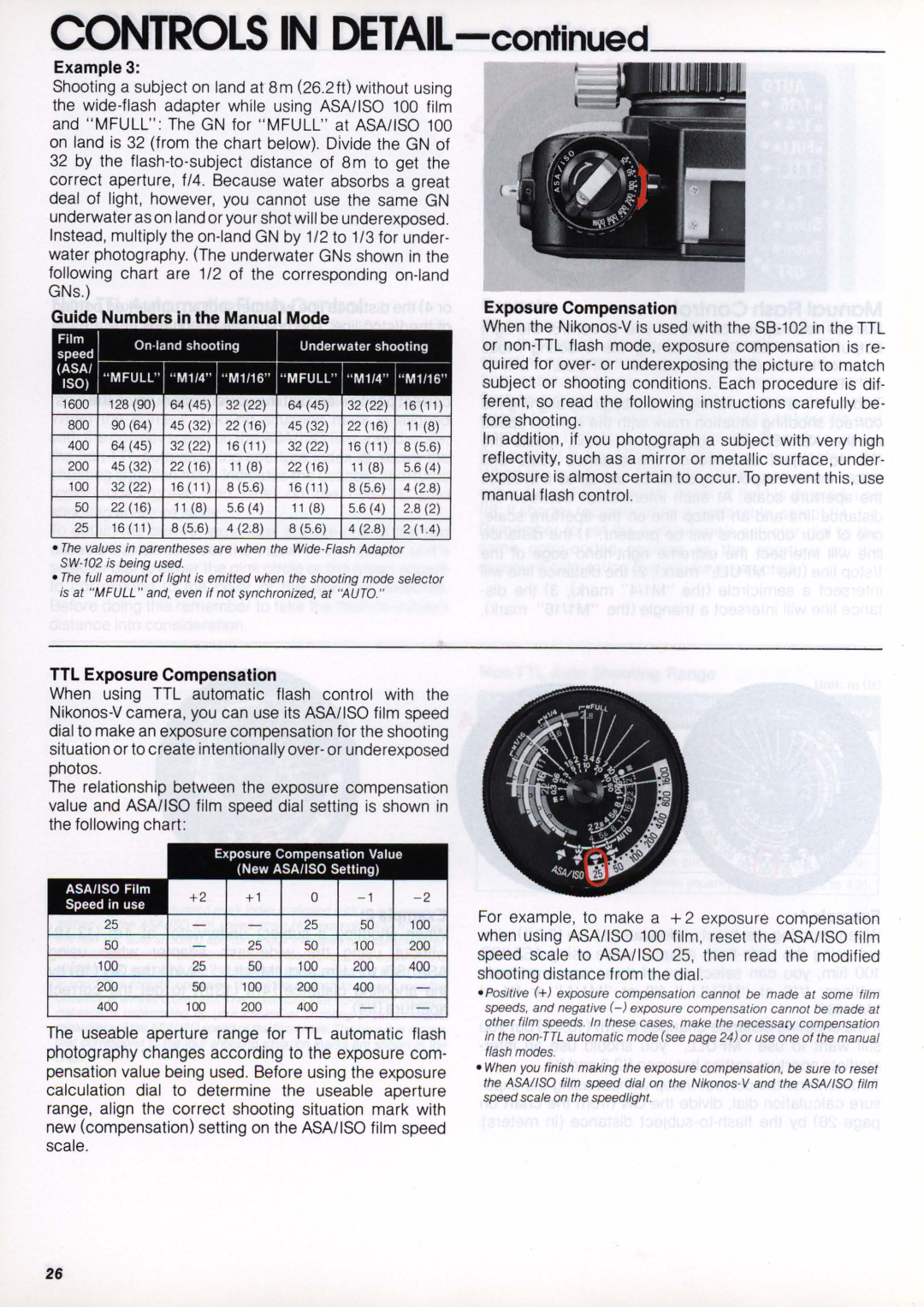
CONTROLS IN DETAIL-continued____
Example 3:
Shooting a subject on land at 8m (26.2ft) without using the
32by the
Guide Numbers in the Manual Mode
•The values in parentheses are when the
•The full amount of light is emitted when the shooting mode selector is at "MFULL " and, even if not liynchronized, at "AUTO."
Exposure Compensation
When the
In addition , if you photograph a subject with very high reflectivity, such as a mirror or metallic surface, under- exposure is almost certain to occur. To prevent this, use manual flash control.
TTL Exposure Compensation
When using TTL automatic flash control with the
The relationship between the exposure compensation value and ASAIISO film speed dial setting is shown in the following chart:
The useable aperture range for TTL automatic flash photography changes according to the exposure com- pensation value being used. Before using the exposure calculation dial to determine the useable aperture range, align the correct shooting situation mark with new (compensation) setting on the ASAIISO film speed scale.
For example, to make a + 2 exposure compensation when using ASAIISO 100 film , reset the ASAIISO film speed scale to ASAIISO 25, then read the modified shooting distance from the dial.
·Positive (+) exposure compensation cannot be made at some film speeds, and negative
•When you finish making the exposure compensation, be sure to reset the ASAIISO film speed dial on the
26
